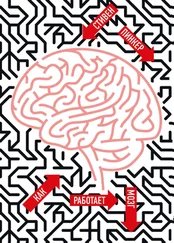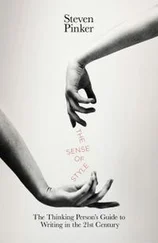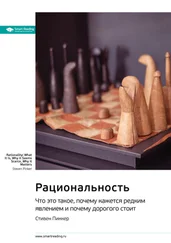Burnham, R., & Phelan, J. 2000. Mean genes: From sex to money to food: Taming our primal instincts. Cambridge, Mass.: Perseus.
Burnstein, E., Crandall, C., & Kitayama, S. 1994. Some neo-Darwinian decision rules for altruism: Weighing cues for inclusive fitness as a function of the biological importance of the decision. Journal of Personality and Social Psychology, 67, 773–789.
Buss, D., & Duntley, J. D. In press. Why the mind is designed for murder: The coevolution of killing and death prevention strategies. Behavioral and Brain Sciences.
Buss, D. M. 1992. Mate preference mechanisms: Consequences for partner choice and intrasexual competition. In J. Barkow, L. Cosmides, & J. Tooby (Eds.), The Adapted Mind: Evolutionary psychology and the generation of culture. New York: Oxford University Press.
Buss, D. M. 1994. The evolution of desire. New York: Basic Books.
Buss, D. M. 1995. Evolutionary psychology: A new paradigm for psychological science. Psychological Inquiry, 6, 1–30.
Buss, D. M. 1999. Evolutionary psychology: The new science of the mind. Boston: Allyn and Bacon.
Buss, D. M. 2000. The dangerous passion: Why jealousy is as necessary as love and sex. New York: Free Press.
Butterworth, B. 1999. The mathematical brain. London: Macmillan. Calvin, W. H. 1996a. The cerebral code. Cambridge, Mass.: MIT Press. Calvin, W. H. 1996b. How brains think. New York: Basic Books.
Calvin, W. H., & Bickerton, D. 2000. Lingua ex machina: Reconciling Darwin and Chomsky with the human brain. Cambridge, Mass.: MIT Press.
Calvin, W. H., & Ojemann, G. A. 2001. Inside the brain: Mapping the cortex, exploring the neuron: www.iuniverse.com.
Campbell, J. D., & Fairey, P. J. 1989. Informational and normative routes to conformity: The effect of faction size as a function of norm extremity and attention to the stimulus. Journal of Personality and Social Psychology, 51, 315–324.
Cappon, L. J. (Ed.) 1959. The Adams-Jefferson letters. New York: Simon & Schuster. Caramazza, A., & Shelton, J. A. 1998. Domain-specific knowledge systems in the brain: The animate-inanimate distinction. Journal of Cognitive Neuroscience, 10, 1–34.
Carey, S. 1986. Cognitive science and science education. American Psychologist, 41, 1123–1130.
Carey, S., & Spelke, E. 1994. Domain-specific knowledge and conceptual change. In L. A. Hirschfeld & S. A. Gelman (Eds.), Mapping the mind: Domain specificity in cognition and culture. New York: Cambridge University Press.
Carpenter, M., Akhtar, N., & Tomasello, M. 1998. Fourteen- through eighteen-month- old infants differentially imitate intentional and accidental actions. Infant Behavior and Development, 21, 315–330.
Carroll, J. 1995. Evolution and literary theory. Columbia: University of Missouri Press. Cartmill, M. 1998. Oppressed by evolution. Discover, 19, 78–83.
Cartwright, J. 2000. Evolution and human behavior. Cambridge, Mass.: MIT Press.
Caryl, P. G. 1994. Early event-related potentials correlate with inspection time and intelligence. Intelligence, 18, 15–46.
Cashdan, E. 1989. Hunters and gatherers: Economic behavior in bands. In S. Plattner (Ed.), Economic anthropology. Stanford, Calif.: Stanford University Press.
Caspi, A. 2000. The child is father of the man: Personality continuities from childhood to adulthood. Journal of Personality and Social Psychology, 78, 158–172.
Catalano, S. M., & Shatz, C. J. 1998. Activity-dependent cortical target selection by thalamic axons. Science, 24, 559–562.
Cavalli-Sforza, L. L. 1991. Genes, people, and languages. Scientific American, 104–110.
Cavalli-Sforza, L. L., & Feldman, M. W. 1981. Cultural transmission and evolution: A quantitative approach. Princeton, N. J.: Princeton University Press.
Chabris, C. F. 1999. Prelude or requiem for the "Mozart effect"? Nature, 400, 826–828.
Chagnon, N. A. 1988. Life histories, blood revenge, and warfare in a tribal population. Science, 239, 985–992.
Chagnon, N. A. 1992. Yanomamö: The last days of Eden. New York: Harcourt Brace. Chagnon, N. A. 1996. Chronic problems in understanding tribal violence and warfare. In G. Bock & J. Goode (Eds.), The genetics of criminal and antisocial behavior. New York: Wiley.
Chalupa, L. M. 2000. A comparative perspective on the formation of retinal connections in the mammalian brain. In M. S. Gazzaniga (Ed.), The new cognitive neurosciences. Cambridge, Mass.: MIT Press.
Chandler, D. P. 1999. Brother number one: A political biography of Pol Pot. Boulder, Colo.: Westview Press.
Charlesworth, B. 1987. The heritability of fitness. In J. W. Bradbury & M. B. Andersson (Eds.), Sexual selection: Testing the hypotheses. New York: Wiley.
Charlton, T. 1997. The inception of broadcast television: A naturalistic study of television's effects in St. Helena, South Atlantic. In T. Charlton & K. David (Eds.), Elusive links: Television, video games, and children's behavior. Cheltenham, UK: Park Published Papers.
Chase, W. G., & Simon, H. A. 1973. Perception in chess. Cognitive Psychology, 4, 55–81.
Check, J. V. P., & Malamuth, N. 1985. An empirical assessment of some feminist hypotheses about rape. International Journal of Women's Studies, 8, 414–423.
Chirot, D. 1994. Modern tyrants. Princeton: Princeton University Press. Chomsky, N. 1970. Language and freedom. Abraxas, I, 9–24.
Chomsky, N. 1973. Psychology and ideology. In N. Chomsky (Ed.), For reasons of state. New York: Vintage.
Chomsky, N. 1975. Reflections on language. New York: Pantheon.
Chomsky, N. 1980. Rules and representations. New York: Columbia University Press.
Chomsky, N. 1988a. Language and politics. Montreal: Black Rose Books.
Chomsky, N. 1988b. Language and problems of knowledge: The Managua lectures.
Cambridge, Mass.: MIT Press.
Chomsky, N. 1993. Language and thought. Wakefield, R. I.: Moyer Bell. Chomsky, N. 2000. New horizons in the study of language and mind. New York:
Cambridge University Press.
Chorney, M. J., Chorney, K., Seese, N., Owen, M. J., McGuffin, P., Daniels, J., Thompson, L. A., Detterman, D. K., Benbow, C. P., Lubinski, D., Eley, T. C., & Plomin, R. 1998. A quantitative trait locus (QTL) associated with cognitive ability in children. Psychological Science, 9, 159–166.
Chorover, S. L. 1979. From genesis to genocide: The meaning of human nature and the power of behavior control. Cambridge, Mass.: MIT Press.
Clahsen, H. 1999. Lexical entries and rules of language: A multidisciplinary study of German inflection. Behavioral and Brain Sciences, 22, 991–1013.
Clark, R. 1970. Crime in America: Observations on its nature, causes, prevention, and control. New York: Simon & Schuster.
Claverie, J.-M. 2001. What if there are only 30,000 human genes? Science, 291, 1255–1257.
Cohen, J. 1997. The natural goodness of humanity. In A. Reath, B. Herman, & C. Korsgaard (Eds.), Reclaiming the history of ethics: Essays for John Rawls. New York: Cambridge University Press.
Colapinto, J. 2000. As nature made him: The boy who was raised as a girl. New York: HarperCollins.
Collins, W. A., Maccoby, E. E., Steinberg, L., Hetherington, E. M., & Bornstein, M. H. 2000. Contemporary research on parenting: The case for nature and nurture. American Psychologist, 55, 218–232.
Conquest, R. 2000. Reflections on a ravaged century. New York: Norton.
Cooke, B., & Turner, F. (Eds.) 1999. Biopoetics: Evolutionary explorations in the arts. St. Paul, MN: Paragon House.
Cosmides, L., & Tooby, J. 1992. Cognitive adaptations for social exchange. In J. H. Barkow, L. Cosmides, & J. Tooby (Eds.), The adapted mind: Evolutionary psychology and the generation of culture. New York: Oxford University Press.
Cosmides, L., & Tooby, J. 1996. Are humans good intuitive statisticians after all? Rethinking some conclusions from the literature on judgment under uncertainty. Cognition, 58, 1–73.
Читать дальше
Конец ознакомительного отрывка
Купить книгу











